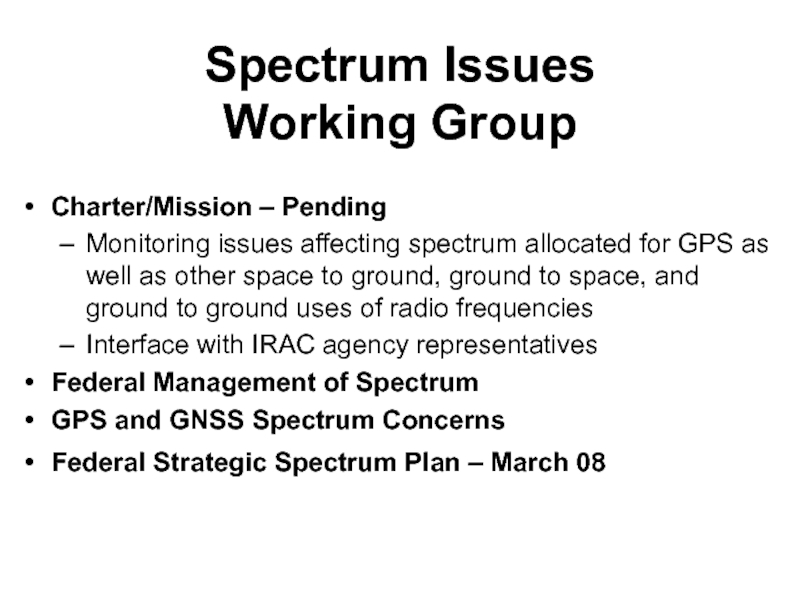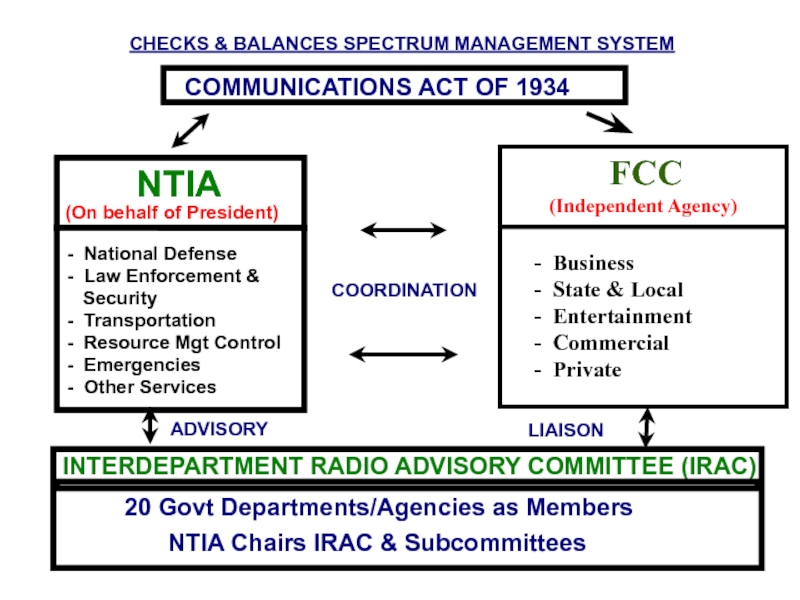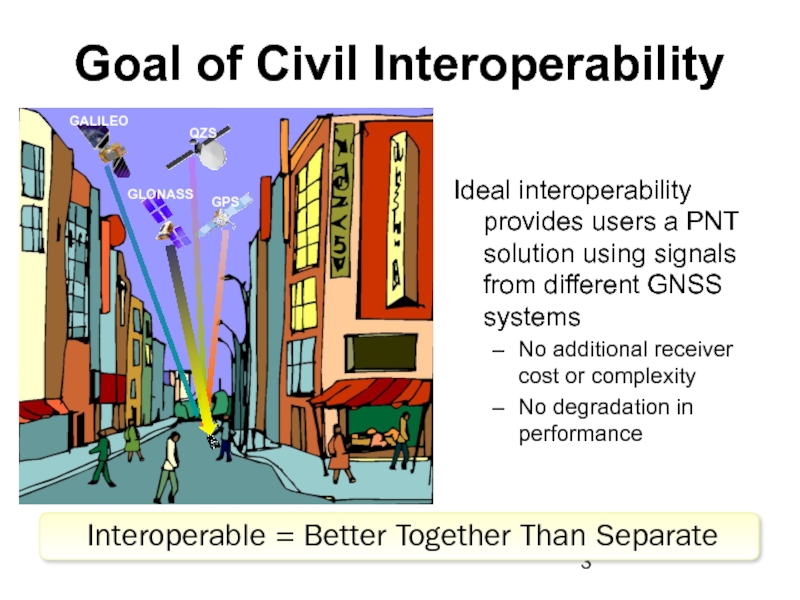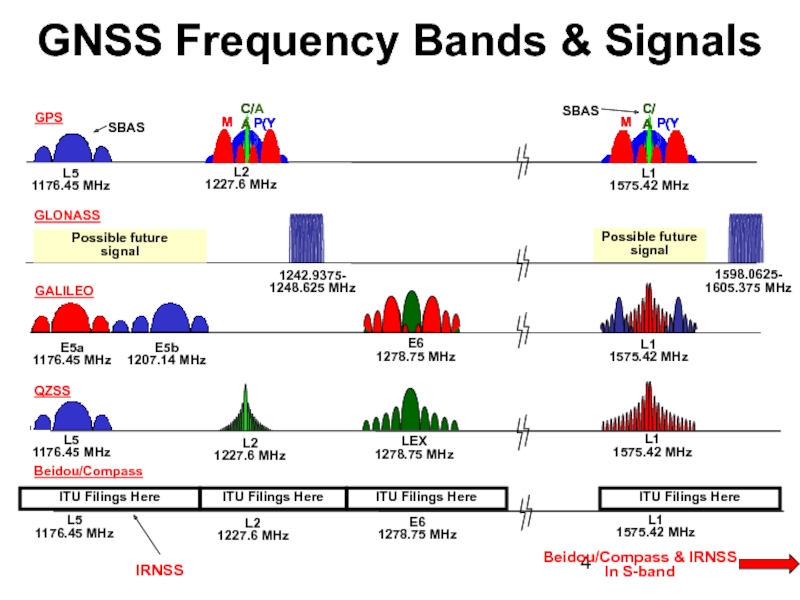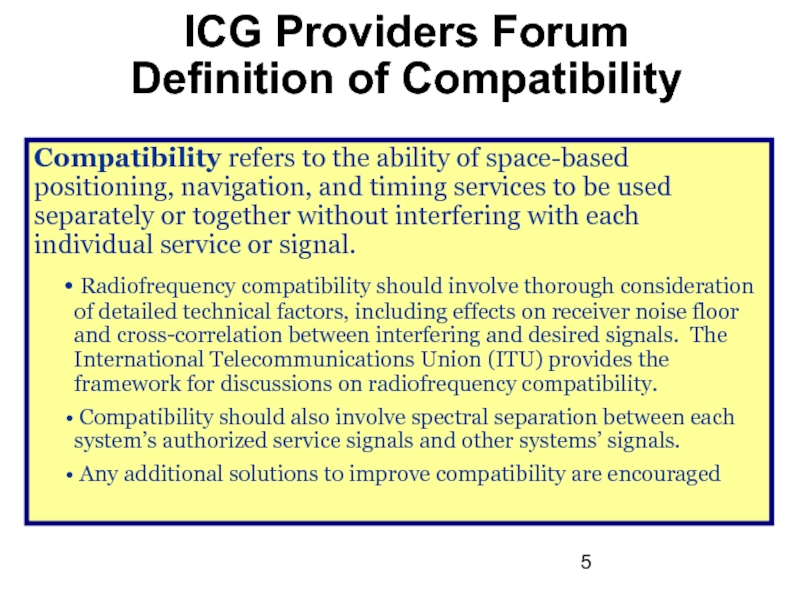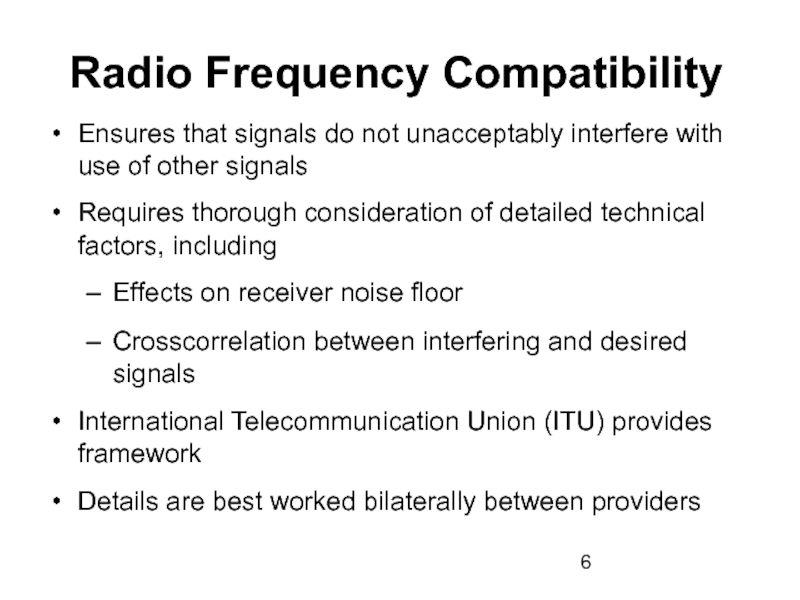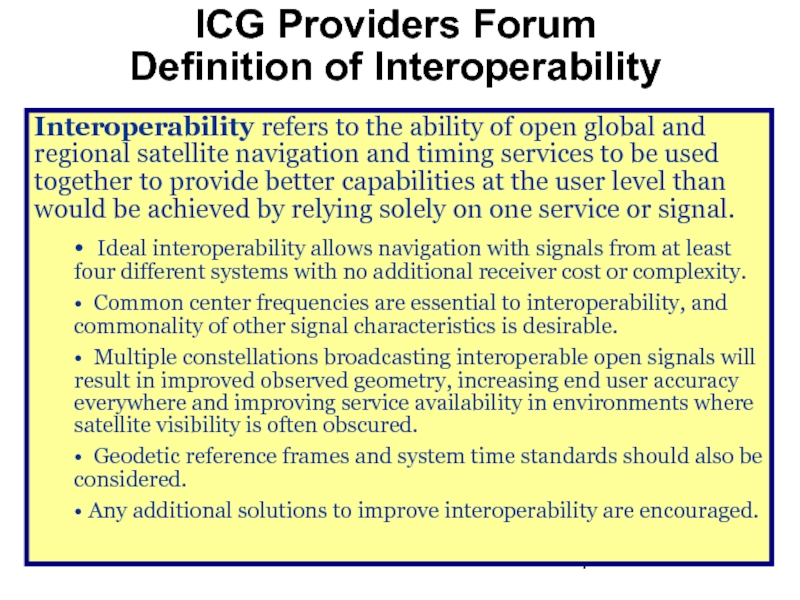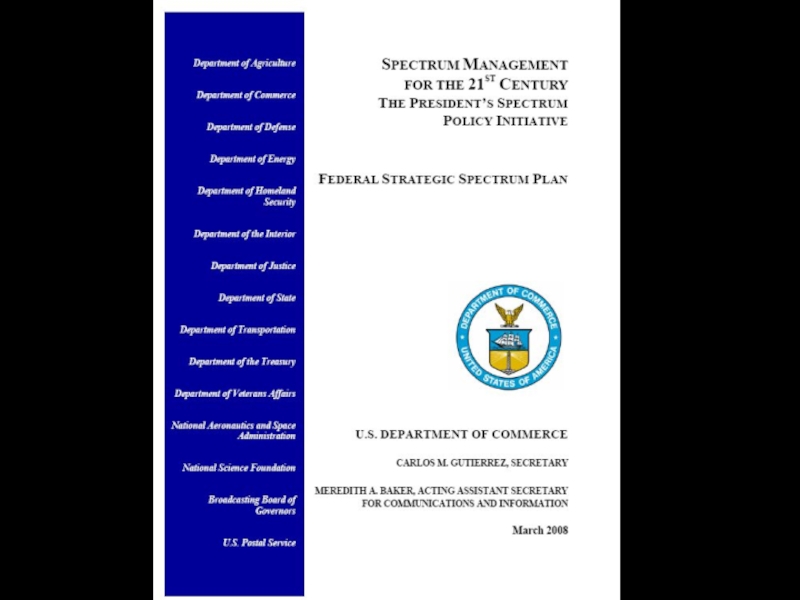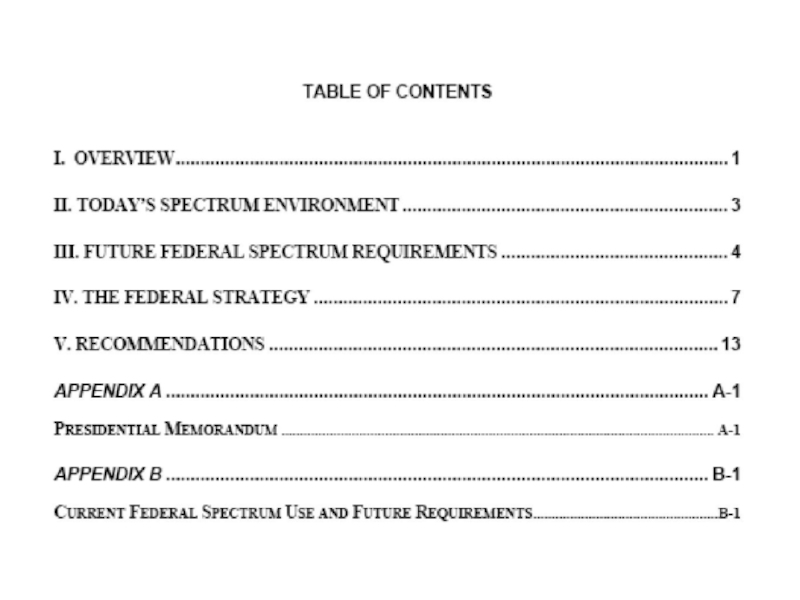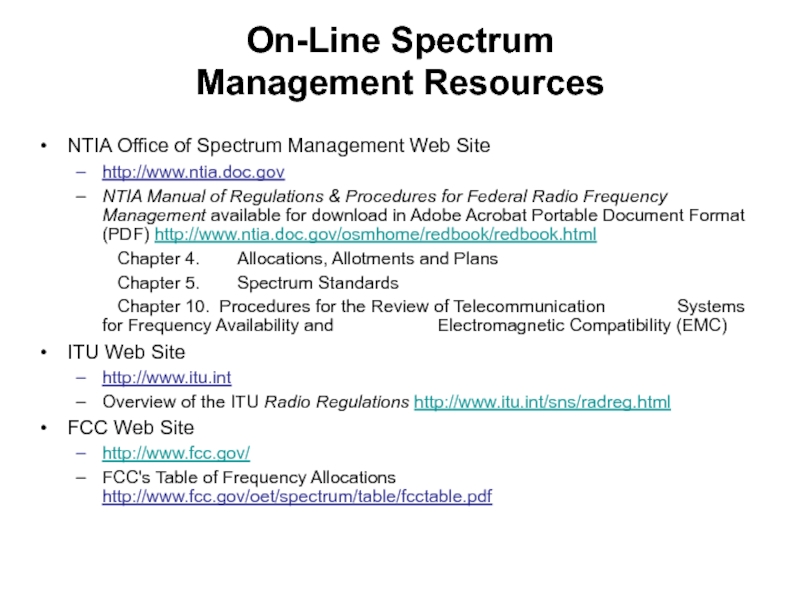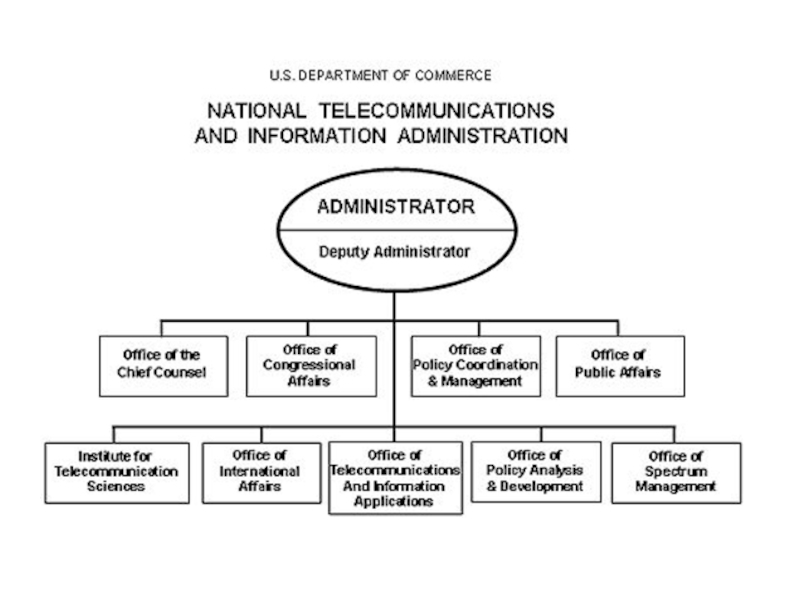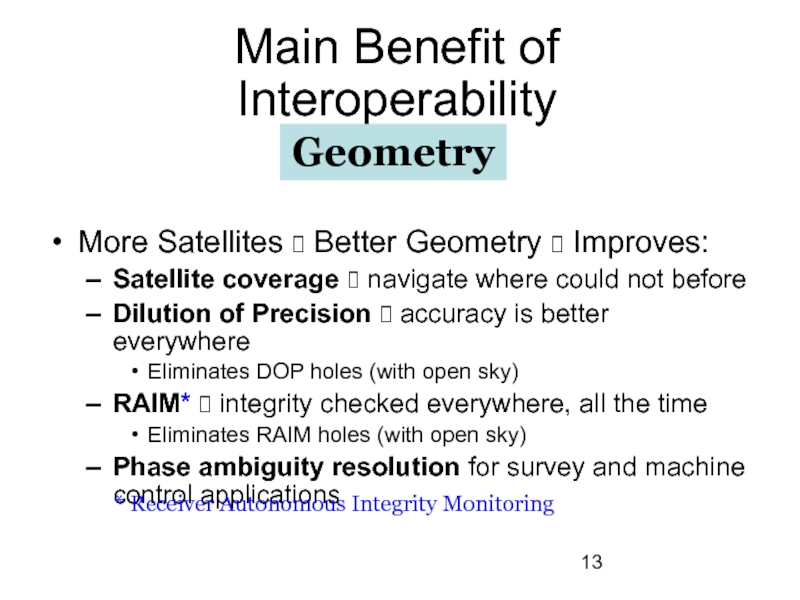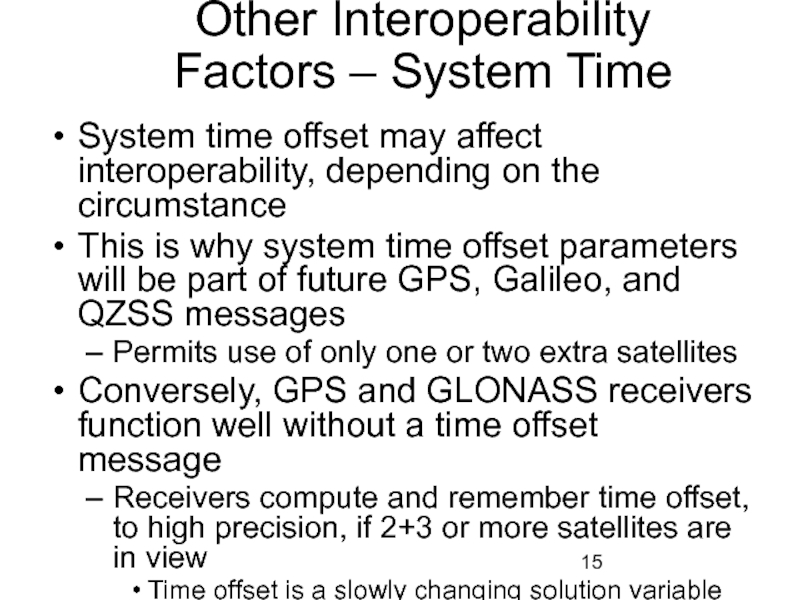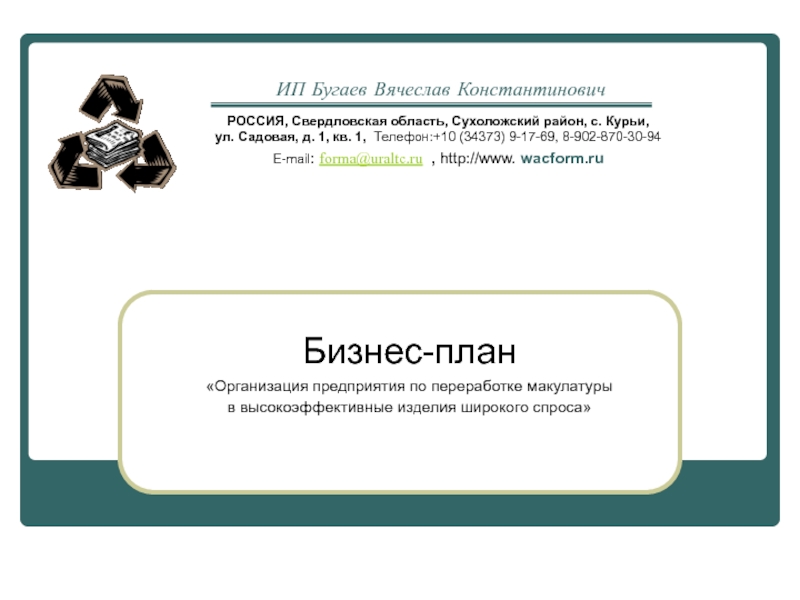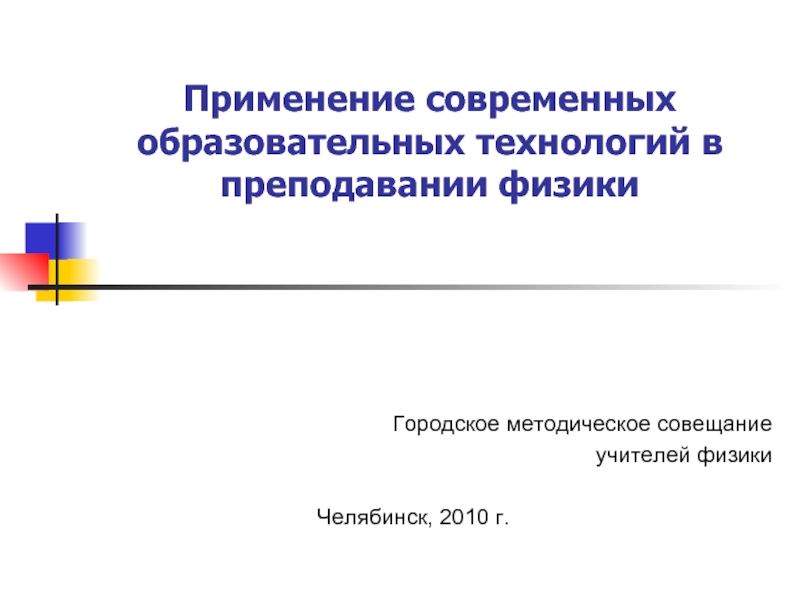- Главная
- Разное
- Дизайн
- Бизнес и предпринимательство
- Аналитика
- Образование
- Развлечения
- Красота и здоровье
- Финансы
- Государство
- Путешествия
- Спорт
- Недвижимость
- Армия
- Графика
- Культурология
- Еда и кулинария
- Лингвистика
- Английский язык
- Астрономия
- Алгебра
- Биология
- География
- Детские презентации
- Информатика
- История
- Литература
- Маркетинг
- Математика
- Медицина
- Менеджмент
- Музыка
- МХК
- Немецкий язык
- ОБЖ
- Обществознание
- Окружающий мир
- Педагогика
- Русский язык
- Технология
- Физика
- Философия
- Химия
- Шаблоны, картинки для презентаций
- Экология
- Экономика
- Юриспруденция
Brief on spectrum management issues презентация
Содержание
- 1. Brief on spectrum management issues
- 2. CHECKS & BALANCES SPECTRUM MANAGEMENT SYSTEM
- 3. Goal of Civil Interoperability Ideal interoperability provides
- 4. L5 1176.45 MHz E5a 1176.45 MHz E5b
- 5. ICG Providers Forum Definition of Compatibility Compatibility
- 6. Radio Frequency Compatibility Ensures that signals do
- 7. ICG Providers Forum Definition of Interoperability Interoperability
- 10. On-Line Spectrum Management Resources NTIA Office
- 11. BACKUP SLIDES
- 13. Main Benefit of Interoperability More Satellites ?
- 14. Important for Interoperability Common
- 15. Other Interoperability Factors – System Time System
Слайд 1Spectrum Issues
Working Group
Charter/Mission – Pending
Monitoring issues affecting spectrum allocated for GPS
Interface with IRAC agency representatives
Federal Management of Spectrum
GPS and GNSS Spectrum Concerns
Federal Strategic Spectrum Plan – March 08
Слайд 2CHECKS & BALANCES SPECTRUM MANAGEMENT SYSTEM
(Independent Agency)
- Business
- State & Local
- Entertainment
- Commercial
- Private
Слайд 3Goal of Civil Interoperability
Ideal interoperability provides users a PNT solution using
No additional receiver cost or complexity
No degradation in performance
Interoperable = Better Together Than Separate
Слайд 4L5
1176.45 MHz
E5a
1176.45 MHz
E5b
1207.14 MHz
L2
1227.6 MHz
E6
1278.75 MHz
L1
1575.42 MHz
L1
1575.42 MHz
1242.9375-
1248.625 MHz
1598.0625-
1605.375 MHz
GLONASS
GALILEO
L5
1176.45 MHz
L2
1227.6
LEX
1278.75 MHz
L1
1575.42 MHz
QZSS
GNSS Frequency Bands & Signals
Possible future
signal
Possible future
signal
SBAS
SBAS
IRNSS
Beidou/Compass & IRNSS
In S-band
Слайд 5ICG Providers Forum Definition of Compatibility
Compatibility refers to the ability of
Radiofrequency compatibility should involve thorough consideration of detailed technical factors, including effects on receiver noise floor and cross-correlation between interfering and desired signals. The International Telecommunications Union (ITU) provides the framework for discussions on radiofrequency compatibility.
Compatibility should also involve spectral separation between each system’s authorized service signals and other systems’ signals.
Any additional solutions to improve compatibility are encouraged
Слайд 6Radio Frequency Compatibility
Ensures that signals do not unacceptably interfere with use
Requires thorough consideration of detailed technical factors, including
Effects on receiver noise floor
Crosscorrelation between interfering and desired signals
International Telecommunication Union (ITU) provides framework
Details are best worked bilaterally between providers
Слайд 7ICG Providers Forum Definition of Interoperability
Interoperability refers to the ability of
• Ideal interoperability allows navigation with signals from at least four different systems with no additional receiver cost or complexity.
• Common center frequencies are essential to interoperability, and commonality of other signal characteristics is desirable.
• Multiple constellations broadcasting interoperable open signals will result in improved observed geometry, increasing end user accuracy everywhere and improving service availability in environments where satellite visibility is often obscured.
• Geodetic reference frames and system time standards should also be considered.
• Any additional solutions to improve interoperability are encouraged.
Слайд 10On-Line Spectrum
Management Resources
NTIA Office of Spectrum Management Web Site
http://www.ntia.doc.gov
NTIA Manual
Chapter 4. Allocations, Allotments and Plans
Chapter 5. Spectrum Standards
Chapter 10. Procedures for the Review of Telecommunication Systems for Frequency Availability and Electromagnetic Compatibility (EMC)
ITU Web Site
http://www.itu.int
Overview of the ITU Radio Regulations http://www.itu.int/sns/radreg.html
FCC Web Site
http://www.fcc.gov/
FCC's Table of Frequency Allocations http://www.fcc.gov/oet/spectrum/table/fcctable.pdf
Слайд 13Main Benefit of Interoperability
More Satellites ? Better Geometry ? Improves:
Satellite coverage
Dilution of Precision ? accuracy is better everywhere
Eliminates DOP holes (with open sky)
RAIM* ? integrity checked everywhere, all the time
Eliminates RAIM holes (with open sky)
Phase ambiguity resolution for survey and machine control applications
Geometry
* Receiver Autonomous Integrity Monitoring
Слайд 14
Important for Interoperability
Common Center Frequency
Like L5 & E5a
Same Antenna Polarization
Common Signal
Identical receiver time delay with common spectrum
Same coherent integration period for acquisition
Usually related to symbol rate
Different symbol rates may require separate search correlators for acquiring signals
Essential (cost driver)
Desirable (ASIC gate count)
Important (no time bias or filter issues)
Слайд 15Other Interoperability Factors – System Time
System time offset may affect interoperability,
This is why system time offset parameters will be part of future GPS, Galileo, and QZSS messages
Permits use of only one or two extra satellites
Conversely, GPS and GLONASS receivers function well without a time offset message
Receivers compute and remember time offset, to high precision, if 2+3 or more satellites are in view
Time offset is a slowly changing solution variable
No impact with common differential corrections
From the same reference station or network
